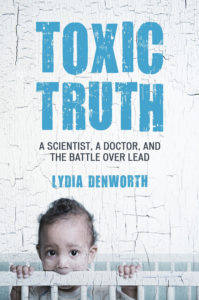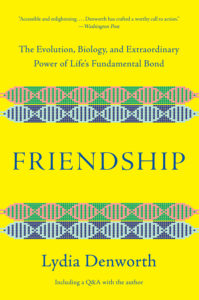I Can Hear You Whisper

Overview
My toddler was not learning to talk the way his brothers did… Was something wrong? My search for answers in the science of sound and language is a journey into the mysteries of the human brain.
My third son, Alex, was nearly two when he was identified with significant hearing loss that was likely to get worse. My sweet boy with the big brown eyes had probably never heard my lullabies.
I knew the importance of enrichment to the developing brain, but had never contemplated the opposite: Deprivation. How would a child’s brain grow outside the world of sound we too often take for granted? How would he communicate? Would he learn to read and write—weren’t phonics a key to literacy? How long did we have until Alex’s brain changed irrevocably? In my drive to understand the choices—starting with the politically loaded debate between American Sign Language and the controversial but revolutionary cochlear implant—I soon found that every decision carried weighty scientific, social and even political implications. As I grappled with the complex collisions between the emerging field of brain plasticity, the possibilities of modern technology and the changing culture of the deaf community, I gained a new appreciation of the exquisite relationship between sound, language and learning. It became clear that Alex’s ears—and indeed everyone’s—were just the beginning. Hearing, through sound, is inextricably linked to language and through language to literacy.
Weaving together tales from the centuries-long quest to develop the cochlear implant and simultaneous leaps in neuroscientific knowledge against a tumultuous backdrop of identity politics, I Can Hear You Whisper shows how sound sculpts our children’s brains and the life changing consequences of that delicate process.
Read MoreToxic Truth

Overview
The first book to tell the incredible story of two men behind the bitter thirty-year fight to protect children from lead.
They didn’t start out as environmental warriors. Clair Patterson was a geochemist focused on determining the age of the Earth. Herbert Needleman was a pediatrician treating inner-city children. But in the chemistry lab and the hospital ward, they met a common enemy: lead. It was literally everywhere—in gasoline and paint, of course, but also in water pipes and food cans, toothpaste tubes and toys, ceramics and cosmetics, jewelry and batteries. Though few people worried about it at the time, lead was also toxic.
In Toxic Truth, I tell the little-known stories of these two men who were among the first to question the wisdom of filling the world with such a harmful metal, following them from the ice and snow of Antarctica to the schoolyards of Philadelphia and Boston as they uncovered the enormity of the problem and demonstrated the irreparable harm lead was doing to children. In heated conferences and courtrooms, the halls of Congress and at the Environmental Protection Agency, the scientist and doctor were forced to defend their careers and reputations in the face of intense industry opposition. It took courage, passion and determination to prevail against entrenched corporate interests and politicized government bureaucracies. But Patterson, Needleman and their allies did finally get the lead out—since it was removed from gasoline, paint, and food cans in the 1970s, the level of lead in American’s bodies has dropped 90 percent. Their success offers a lesson in the dangers of putting economic priorities over public health, and a reminder of the way science—and individuals—can change the world.
The fundamental questions raised by this battle—what constitutes disease, how to measure scientific independence, and how to quantify acceptable risk—echo in every environmental issue of today: from the plastic used to make water bottles to greenhouse gas emissions. And the most basic question—how much do we need to know about what we put in our environment—is perhaps more relevant today than it has ever been.
Read MoreFriendship

A Next Big Idea Club Must-Read Nonfiction Book of Winter 2020
Named one of best books of 2020 by Real Simple
Named one of 20 best leadership books for 2020 by organizational psychologist and best-selling author Adam Grant
Named one of the “best reviewed books” of January by BookMarks based on reviews in New York Times, Wall Street Journal, Washington Post, Booklist, Kirkus, Publishers Weekly, and more
Named one of the “most anticipated books of Winter 2020” by Apple Books
Overview
A revelatory investigation of friendship, with profound implications for our understanding of what humans and animals alike need to thrive across a lifetime.
The phenomenon of friendship is universal and elemental. Friends, after all, are the family we choose. But what makes these bonds not just pleasant but essential, and how do they affect our bodies and our minds?
In Friendship, science journalist Lydia Denworth takes us in search of friendship’s biological, psychological, and evolutionary foundations. She finds friendship to be as old as early life on the African savannas―when tribes of people grew large enough for individuals to seek fulfillment of their social needs outside their immediate families. Denworth sees this urge to connect reflected in primates, too, taking us to a monkey sanctuary in Puerto Rico and a baboon colony in Kenya to examine social bonds that offer insight into our own. She meets scientists at the frontiers of brain and genetics research and discovers that friendship is reflected in our brain waves, our genomes, and our cardiovascular and immune systems; its opposite, loneliness, can kill. At long last, social connection is recognized as critical to wellness and longevity.
With insight and warmth, Denworth weaves past and present, field biology and neuroscience, to show how our bodies and minds are designed for friendship across life stages, the processes by which healthy social bonds are developed and maintained, and how friendship is changing in the age of social media. Blending compelling science, storytelling, and a grand evolutionary perspective, Denworth delineates the essential role that cooperation and companionship play in creating human (and nonhuman) societies.
Friendship illuminates the vital aspects of friendship, both visible and invisible, and offers a refreshingly optimistic vision of human nature. It is a clarion call for putting positive relationships at the center of our lives.
Read More